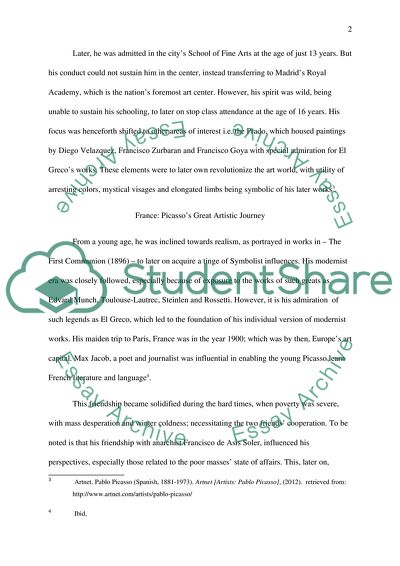Cite this document
(“A Foreign artist in Paris - Pablo Picasso Research Paper”, n.d.)
Retrieved from https://studentshare.org/visual-arts-film-studies/1646128-foreign-artist-in-paris-pablo-picasso
Retrieved from https://studentshare.org/visual-arts-film-studies/1646128-foreign-artist-in-paris-pablo-picasso
(A Foreign Artist in Paris - Pablo Picasso Research Paper)
https://studentshare.org/visual-arts-film-studies/1646128-foreign-artist-in-paris-pablo-picasso.
https://studentshare.org/visual-arts-film-studies/1646128-foreign-artist-in-paris-pablo-picasso.
“A Foreign Artist in Paris - Pablo Picasso Research Paper”, n.d. https://studentshare.org/visual-arts-film-studies/1646128-foreign-artist-in-paris-pablo-picasso.


